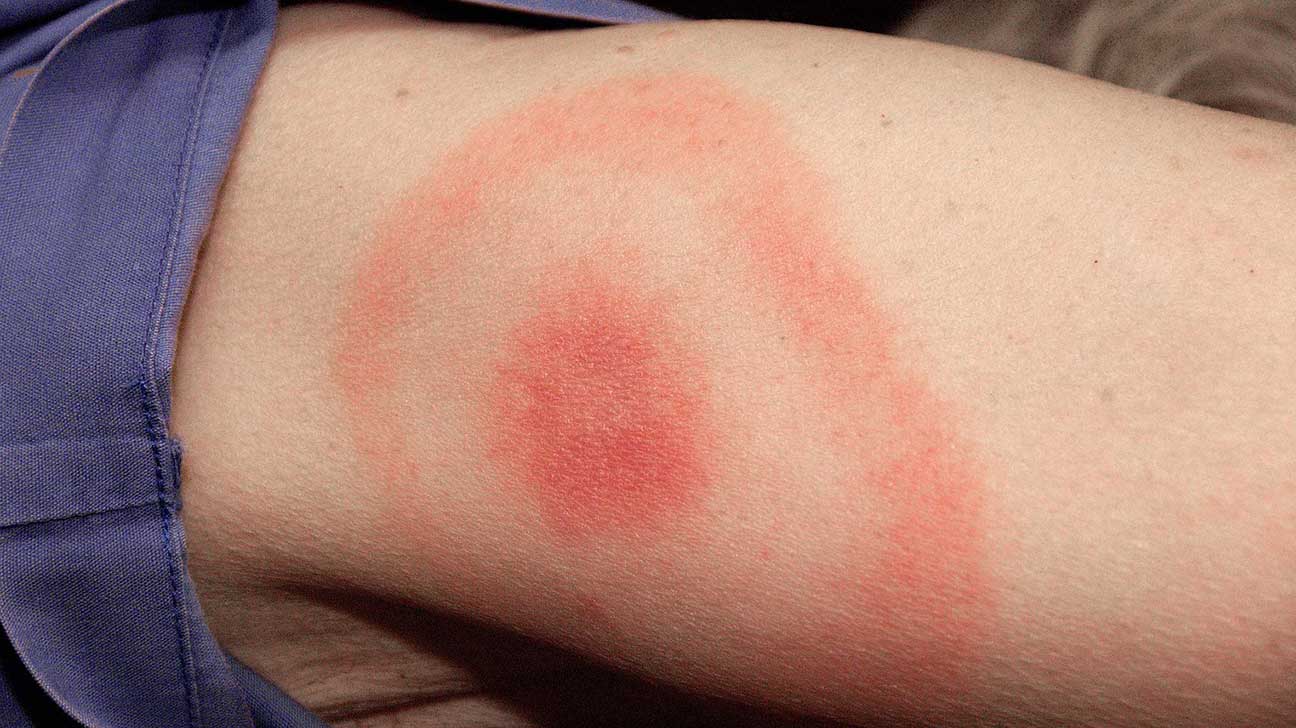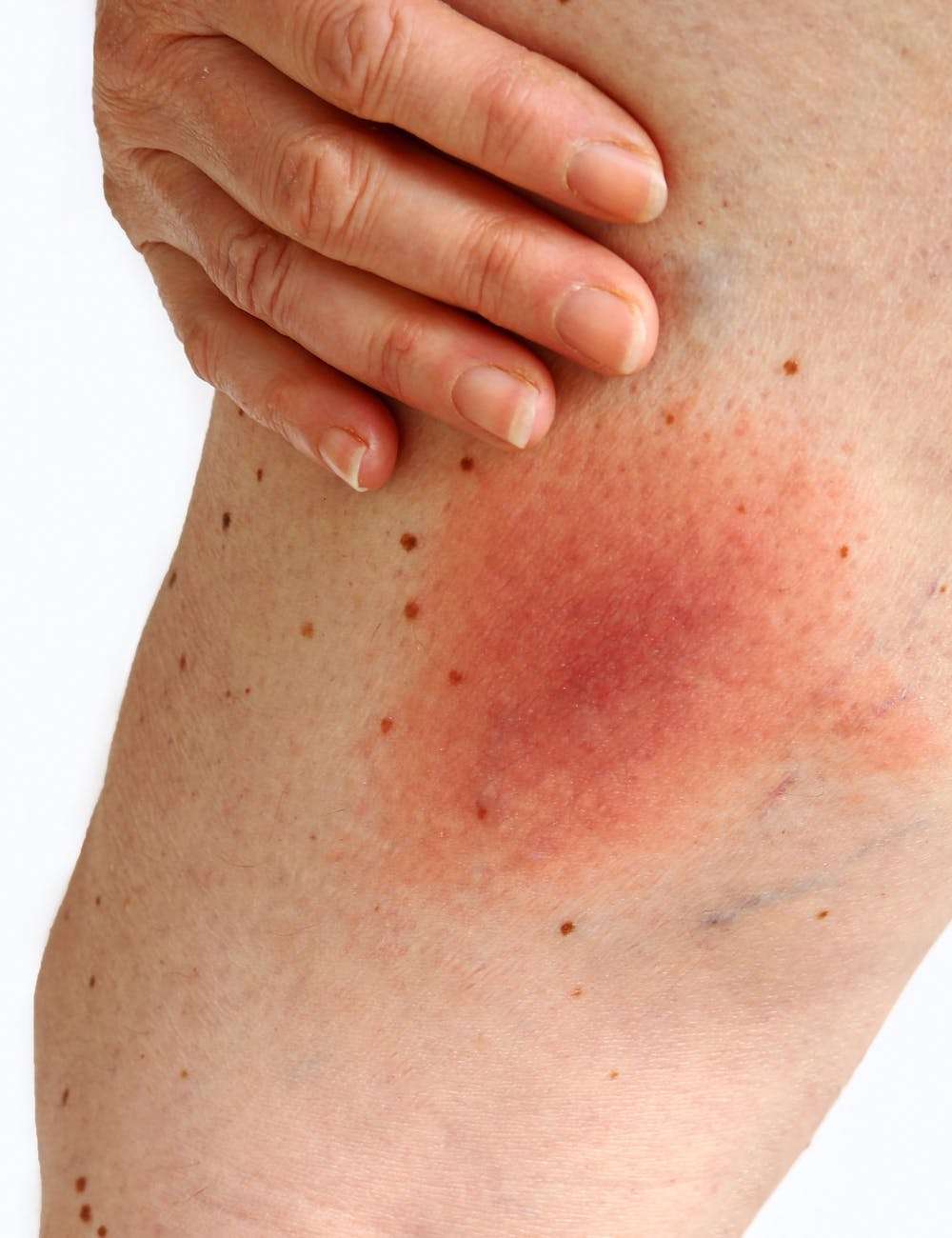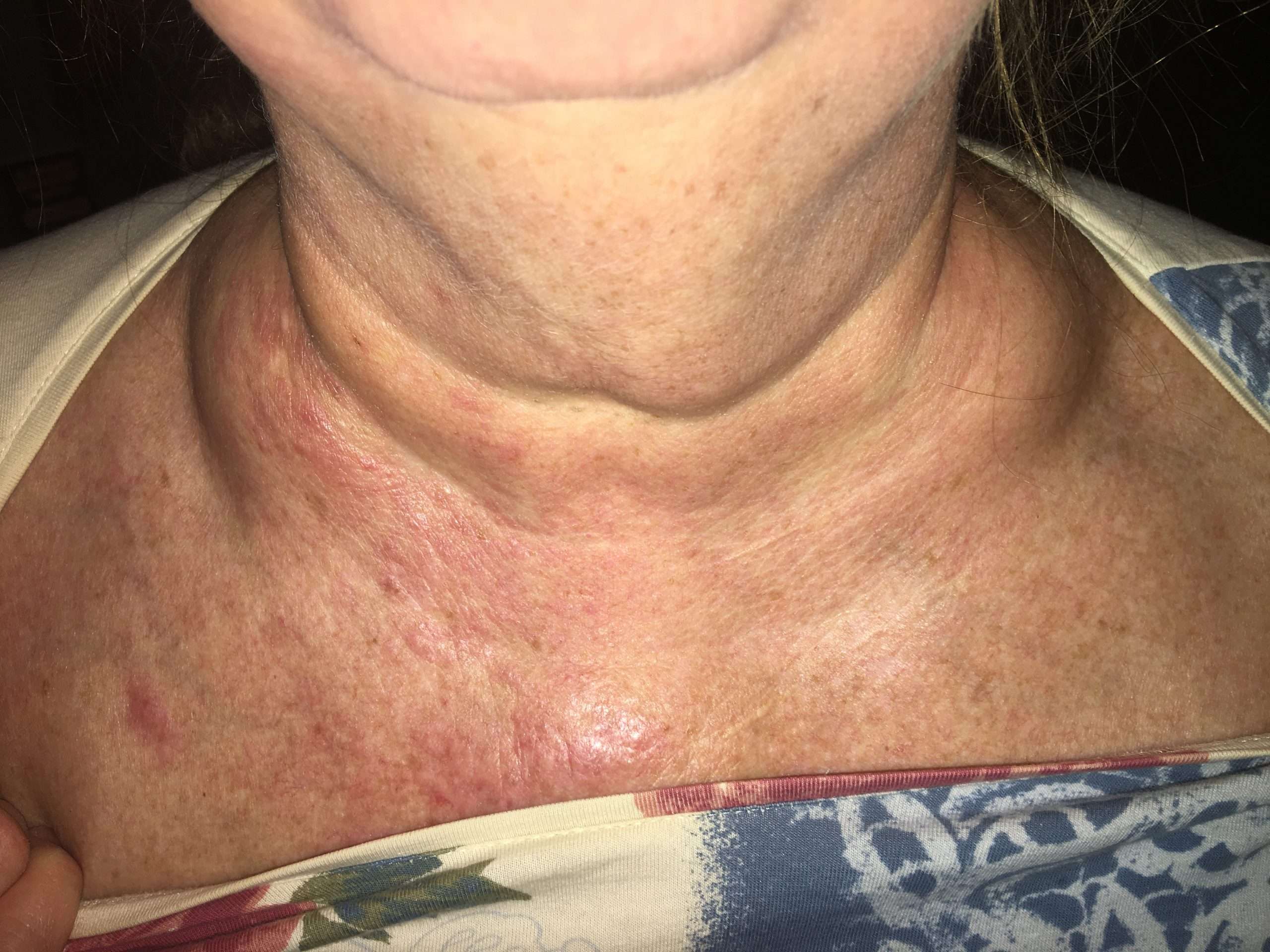What Are The Stages Of Lyme Infection
There are three stages:
- Early localized Lyme: Flu-like symptoms like fever, chills, headache, swollen lymph nodes, sore throat, and a rash that looks like a bull’s-eye or is round and red and at least 2 inches long
- Early disseminated Lyme: Flu-like symptoms like pain, weakness, or numbness in your arms and legs, changes in your vision, heart palpitations and chest pain, a rash , and a type of facial paralysis known as Bellâs palsy
- Late disseminated Lyme: This can happen weeks, months, or years after the tick bite. Symptoms might include arthritis, severe fatigue and headaches, dizziness, trouble sleeping, and confusion.
About 10% of people treated for Lyme infection donât shake the disease. They may go on to have three core symptoms: joint or muscle pain, fatigue, and short-term memory loss or confusion. This is called post-treatment Lyme disease syndrome. It can be hard to diagnose because it has the same symptoms as other diseases. Plus, there isn’t a blood test to confirm it.
Experts arenât sure why Lyme symptoms donât always go away. One theory is that your body keeps fighting the infection even after the bacteria are gone, like an autoimmune disorder.
Explore Manual Lymph Drainage
Manual lymph drainage is a therapeutic massage technique that gently supports and activates the lymphatic system. A trained therapist employs a variety of hand techniques to target lymph nodes and vessels.
The type of technique used varies depending on the area of the body thats being treated. The mild friction across the skin encourages lymph to flow less effortlessly, so no massage oil is used during a session. A typical appointment may last 45 to 60 minutes, and theres a general sequence that each massage should follow.
In addition to its ability to detoxify the lymphatic system, MLD may also be a good fit for you if youre looking for relief from pain or digestive dysfunction, trying to tone your parasympathetic nervous system , or exploring how different types of massage might improve Lyme symptoms. To find a certified therapist in your area, check out the MLD Institute International for massage therapists, or the Lymphedema Association of North America for certified healthcare professionals like nurses, physical therapists, and occupational therapists.
Certainly, theres still a lot to learn about the benefits the lymphatic system has on our health. But as you work to optimize this intricate network within the body, youll begin to experience more energy and vitality, and youll have yet another tool in your toolbox to help you heal from chronic Lyme disease and coinfections.
ABOUT THE AUTHOR
MOST POPULAR
Other Causes Of Lyme Disease Symptoms
Sometimes people think they have the symptoms of Lyme disease, but it is a different disease caused by ticks. Diseases caused by tick bites that are known in Australia are:
- Queensland tick typhus
- Q fever
- mammalian meat allergy
Sometimes there is no known diagnosis for symptoms such as fatigue, disordered thinking, disturbances of the senses, joint pain and headaches. These symptoms are real and can be very debilitating. In this case, you doctor will work with you to manage the symptoms and improve your quality of life.
Also Check: Lyme Disease Blood Test Cost
Treatment Of Lyme Disease
-
Antibiotics
Although all stages of Lyme disease respond to antibiotics, early treatment is more likely to prevent complications.
Antibiotics such as doxycycline, amoxicillin, or cefuroxime, taken by mouth for 2 to 3 weeks, are effective during the early stages of the disease. If early disease is localized, people may need treatment for only 10 days. If people cannot take any of these drugs, azithromycin is sometimes used but is less effective. Usually, doxycycline is not given to children under 8 years old or to pregnant or breastfeeding women.
Antibiotics can also help relieve many of the symptoms of Lyme disease.
For arthritis due to Lyme disease, antibiotics such as amoxicillin, cefuroxime, or doxycycline are given by mouth for 28 days, or ceftriaxone is given intravenously for 28 days.
Antibiotics eradicate the bacteria and, in most people, relieve arthritis. However, arthritis sometimes lasts even after all the bacteria are gone because inflammation continues. Even after successful antibiotic treatment, some people still have other symptoms such as fatigue, headache, and mental problems.
Nonsteroidal anti-inflammatory drugs , such as aspirin or ibuprofen, may relieve the pain of swollen joints. Fluid that collects in affected joints may be drained. Using crutches may help.
Joyce Knestrick Phd Crnp Faanp

Summer is the season to head outdoors, but the looming threat of tick bites has many uneasy about a hike in the woods, with good reason. We are right smack in the middle of peak season for ticks, which means the chance of contracting Lyme disease from a single tick bite is relatively high, especially in the Northeast and Midwest, where 70 percent of the ballooning deer tick population is infected with the health-compromising disease.
Lyme disease is scary in part because the signs can be easy to miss, and undetected cases can progress from treatable to chronic without a patient ever seeing a tick. People on the lookout for the tell-tale bullseye to necessitate a trip to their health care provider may miss the critical treatment window. The reality is that 30 percent of people with Lyme disease never get that bullseye, and because the rash can move locations and is usually not itchy or painful, some people who have a skin reaction never notice it.
So how can you enjoy the outdoors with your family this summer and still avoid Lyme disease? Tick vigilance is a great first step long sleeves and pants, insect repellent containing DEET and Permethrin for clothes and shoes will go a long way in warding off these pesky parasites. Still, there is always a risk of picking up a tiny hitchhiker when you head outside, so its important to understand the symptoms of an infected bite.
You May Like: My Dog Has Lyme Disease
Do All Ticks Transmit Lyme Disease
No. In the northeastern and north-central U.S., the black-legged tick carries Lyme disease. In the Pacific coastal U.S., the western black-legged tick spreads the disease.
Other major tick species in the U.S., like the lone star tick and the dog tick, do NOT transmit the Lyme disease bacterium. But beware: All 50 states have reported Lyme disease, as well as Canada, Europe, Asia, Australia, and South America.
How Is Lyme Disease Treated
With early-stage Lyme disease, youâll take antibiotics for about 10 days to 3 weeks. The most common ones are amoxicillin, cefuroxime, and doxycycline. The antibiotics will almost always cure your infection. If they donât, you might get other antibiotics either by mouth or as a shot.
If you donât treat your Lyme infection, you might need oral antibiotics for symptoms like weakened face muscles and irregular heartbeat. You may need antibiotics if you have meningitis, inflammation in your brain and spinal cord, or more severe heart problems.
If your Lyme is late stage, the doctor might give you antibiotics either by mouth or as a shot. If it causes arthritis, youâll get arthritis treatment.
Thereâs no therapy for post-treatment Lyme disease syndrome.
You May Like: Urgent Care East Lyme Ct
What Are The Signs Of Lyme Disease In Dogs
Just 3-10% of dogs show signs of Lyme disease. If signs are developed, usually lameness, fever, fatigue and swollen lymph nodes are present. In other forms of Lyme disease, where kidneys are affected, signs like vomiting, frequent urination and loss of appetite are seen. To learn more about the signs and symptoms, check the section ‘Symptoms of Lyme Disease in Dogs’.
Lyme Disease Suppresses The Immune System
Any infection will cause your bodys immune system to be on high alert.And thats OK, because thats what the immune system is for! The problem ariseswhen people with Lyme start to enter the chronic, long-term phase that somepatients report experiencing. Because the battle with Lyme is prolonged overmonths or even years, your lymphatic system, an essential component of yourimmune system, understandably gets tired. This begins a vicious cycle, sinceimmunosuppressed people are more susceptible to contracting other illnesses becausetheir system isnt strong enough to fight off everyday bugs as a result ofrunning on overdrive.
Image by on
You May Like: Natural Ways To Prevent Lyme Disease
When Should You See A Doctor If You Think You Have Lyme
The rash is a pretty good indication that you may have been bitten. Take a photo of the rash and see your doctor. At this stage, treatment with antibiotics will probably work.
If you don’t have the rash but have symptoms like fatigue, fever, and headache but no respiratory symptoms like a cough, you may want to talk to your doctor.
Quickly Remove Any Ticks
-
Check all family members after being outdoors and remove any ticks with fine-tipped tweezers. Tick bites are usually painless and most people do not notice when a tick is attached to the skin. If a tick is attached to the skin for less than 24 hours, the chances of getting Lyme disease are fairly small.
Read Also: How To Know If I Have Lyme Disease
Lyme Disease Bacteria Take Cover In Lymph Nodes Study Finds
The bacteria that cause Lyme disease, one of the most important emerging diseases in the United States, appear to hide out in the lymph nodes, triggering a significant immune response, but one that is not strong enough to rout the infection, report researchers at the University of California, Davis.
Results from this groundbreaking study involving mice may explain why some people experience repeated infections of Lyme disease. The study appears online in the journal Public Library of Science Biology.
Our findings suggest for the first time that Borrelia burgdorferi, the bacteria that cause Lyme disease in people, dogs and wildlife, have developed a novel strategy for subverting the immune response of the animals they infect, said Professor Nicole Baumgarth, an authority on immune responses at the UC Davis Center for Comparative Medicine.
At first it seems counter intuitive that an infectious organism would choose to migrate to the lymph nodes where it would automatically trigger an immune response in the host animal, Baumgarth said. But B. burgdorferi have apparently struck an intricate balance that allows the bacteria to both provoke and elude the animals immune response.
Lyme Disease: Signs & Symptoms

Lyme disease can be broken down into twodistinct phases: acute Lyme disease and chronic Lyme disease.When a person is initially bitten by atick carrying Lyme, their body enters the initial stages of the disease theacute period. As the name suggests, this is when the body begins to react tothe immediate bite. Symptoms include the commonly experienced bullseye rash: ared mark where the tick has embedded itself into the persons skin, surroundedby several red, progressively larger circles around the bite. The medical termfor this is Erythema Migrans Rash, and it occurs in 70-80% ofpatients.
Chronic Lymediseaseis characterizedby patients feeling effects of Lyme long after medicine can explain why. Thebacteria may have been purged from the body with antibiotics, yet patients withchronic Lyme still experience symptoms such as trouble with memory, difficultyspeaking, joint pain, fatigue, and mental health disturbances like anxiety anddepression, which some hypothesize could be a result of managing a long-termdisturbance in physical health without appropriate support. Because the actualLyme bacteria in many cases is no longer traceable in the body, chronic Lymedisease can be difficult to diagnose and track.
Don’t Miss: What Are The First Symptoms Of Lyme Disease
What’s The Best Way To Prevent A Tick Bite
Ticks can’t fly or jump. But they live in shrubs and bushes and can grab onto you when you pass by. To avoid getting bitten:
- Wear pants and socks in areas with lots of trees and when you touch fallen leaves.
- Wear a tick repellent on your skin and clothing that has DEET, lemon oil, or eucalyptus.
- For even more protection, use the chemical permethrin on clothing and camping gear.
- Shower within 2 hours after coming inside. Look for ticks on your skin, and wash ticks out of your hair.
- Put your clothing and any exposed gear into a hot dryer to kill whatever pests might be on them.
How do you know if you’ve been bitten?
Since ticks are so small, you’ve got to have pretty good eyes to see them.
If you have a small, red bump on your skin that looks like a mosquito bite, it could be a tick bite. If it goes away in a few days, itâs not a problem. Remember, a tick bite doesnât necessarily mean you have Lyme disease.
If you notice a rash in the shape of a bull’s-eye, you might have a tick bite. Talk to your doctor about treatment.
If you have an allergic reaction to ticks, you’ll notice a bite right away.
Symptoms: As The Infection Spreads
If the disease goes untreated in its early stages, over several weeks or months it can spread to other areas of the body like your:
- Joints
- Heart
- Nervous system
You could also have more rashes and periods of pain and weakness in your arms or legs. Other symptoms include:
- Facial muscle paralysis
- Headache
- Inflamed brain and spinal cord
Also Check: Bee Sting Therapy For Lyme Disease
Borreliosis The 7 Most Important Facts At A Glance
Treatment Of Lyme Disease In Dogs
To treat Lyme disease, your dog will be given an antibiotic. Painkillers or anti- inflammatories can also relieve symptoms. Your veterinarian should start antibacterial therapy as early as possible. For the successful fight against the pathogens, a therapy lasting several weeks for at least one month without interruption is advisable.
Sometimes Lyme disease is only recognized very late because of the often unspecific symptoms and is already chronic. Antibiotics are also given in these cases. Unfortunately, sometimes the Lyme disease does not heal completely and there are long-term damage to various organs. For this reason, it is particularly important that you speak to a veterinarian immediately if you notice that your dog is exhausted and unwilling to eat.
Read Also: Can You Donate A Kidney If You Have Lyme Disease
What Are The First Signs And Symptoms Of Lyme Disease
In the first early localized stage of Lyme disease the skin at the site of the tick bite becomes infected with Borrelia burgdorferi bacteria which can cause an expanding round or oval red skin lesion called erythema migrans. This may or may not be associated with flu-like symptoms within days to a month after the tick bite such as achiness, chills, fever, sweats, fatigue, malaise, headache, stiff neck, muscle soreness, joint pain, swollen lymph nodes, and sore throat. The combination of the skin lesion and flu-like symptoms are the primary manifestations of acute stage Lyme disease. Acute Lyme disease is not associated with typical cold-like symptoms of runny nose, prominent cough, or prominent diarrhea.
Lyme Disease Can Live In Your Lymph Nodes Causing Swelling
Lymphoadenopathy duringLyme Borreliosis is a correlation that doctors are still exploring in depth.Simply put, Lymphoadenopathy is the swelling of the lymph nodes. LymeBorreliosis is the scientific term for Lyme disease, and so the phrasedemarcates the tendency for the lymph nodes to swell when a person hascontracted Lyme. Studies show that Lyme actuallymakes a home for itself in a persons lymph nodes,which triggers an immune reaction, sending the immune system into attack modeto protect the body and commonly leading to swelling.
Often called The GreatImitator, Lyme disease doesnt stop here when it comes to inciting reactionsfrom the body that are difficult to attribute specifically to Lyme . As researchers at University ofCalifornia, Davis, report: B. burgdorferi have apparently struck anintricate balance that allows the bacteria to both provoke and elude theanimals immune response. It is this cycle oftriggering an immune response but not being eradicated, only to trigger theresponse again, that might explain why some peoples Lyme disease becomes achronic illness.
Also Check: How Long Does Lyme Disease Take To Show Symptoms
Take Supportive Enzymes And Herbs
Taking the right natural supplements can help ease inflammation that might clog up your lymphatic system, as well as break down, bind to, and dispose of proteins, bacteria, toxins, and other substances that can lead to dysfunctional lymphatic flow. Some top recommendations from Dr. Bill Rawls, Medical Director of RawlsMD and Vital Plan, include:
- Bromelain, papain, and peptidase: All are protein-digesting enzymes. Having these in your system helps break down some of the proteins that contribute to inflammation, Dr. Rawls says.
- Turmeric: Responsible for the bright yellow color in curry, turmeric helps balance inflammatory responses.
- Sarsaparilla: Derived from the bark of a thorny vine found in South America, sarsaparilla binds to and helps dispose of endotoxins that are released from microbes during die-off.
- Red root: This herb is another one that binds to toxins and flushes the system. But note that red root is a coagulant and can thicken the blood, so avoid it if you have a history of cardiovascular disease, says Dr. Rawls.
Stage : Early Disseminated Lyme Disease

Early disseminated Lyme disease occurs several weeks to months after the tick bite.
Youll have a general feeling of being unwell, and a rash may appear in areas other than the tick bite.
This stage of the disease is primarily characterized by evidence of systemic infection, which means infection has spread throughout the body, including to other organs.
Symptoms can include:
- disturbances in heart rhythm, which can be caused by Lyme carditis
- neurologic conditions, such as numbness, tingling, facial and cranial nerve palsies, and meningitis
The symptoms of stages 1 and 2 can overlap.
Read Also: Can Lyme Disease Cause Memory Loss